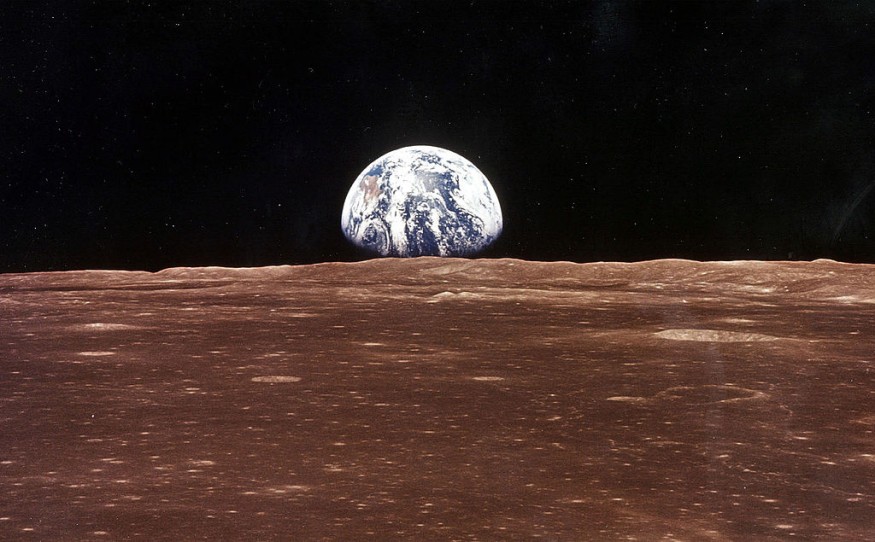The Earth is millions of years old. But how old, really? Our planet is 4.54 billion years old, according to scientists.
Although it appears to be an exact figure, Space.com said the age contains a 50 million-year error margin on both sides. It's not a tiny number of years yet, but it's a close call in the larger scheme of things.
So, how can scientists determine the age of our planet by peering into the mists of time? And how did they get the number down to such a small amount?

Earth is More Than 4 Billion Years Old Now
According to radiometric dating (via Cosmos Magazine), the Earth was born roughly 4.54 billion years ago. Some of these rocks happen to fall right on our doorsteps by chance. One of the meteorites analyzed by Aléon and his team is the Efremovka meteorite.
The discovery of radiometric dating is credited to many specialists for their more advanced dating procedures. A radioactive isotope within a substance is used to determine its age via radiometric dating. Radioactive isotopes decay (radioactivity) over time, and radioactive decay is the process through which an unstable atomic nucleus steadily loses energy over time.
The basic premise is that by comparing the presence of a radioactive isotope in an object or substance to its known abundance or the presence of the stable isotope it's known to decay into, you can determine how long that item or material has been around. This method works for potassium, uranium, carbon, and a few more elements, though carbon-dating is perhaps the most well-known.
Researchers Explain How to Determine Earth's Age
The scientific method for determining the age of the Earth is first locating the oldest piece of the planet experts can find and then determining how old that piece is.
Finding extremely ancient rocks is simple in theory but tricky in practice. Plate tectonics means that the Earth is continually recycling its rock, first breaking it down into magma in the interior and then pumping it back up to the surface.
On the other hand, geochemist Jérôme Aléon of the French National Museum of Natural History used a different method. Aléon and his team compared water isotopes in Efremovka meteorite, the oldest meteorite from the early Solar System, to isotopes of water found on Earth today.
They reported the findings of their study, "Determination of the Initial Hydrogen Isotopic Composition of the Solar System," in the journal Nature Astronomy.
ALSO READ : Moon Plays Crucial Role in Life on Earth, Could Potentially Determine What Makes A Planet Habitable
Earth's Oldest Meteorite Suggests Water Was in The Solar System Before Planet Was Born
According to Science Alert, the original isotopic composition of water in the Solar System is critical to understanding the formation of water on planetary bodies. Still, despite countless research, it remains unclear.
Researchers determined the hydrogen isotopic composition of water at the commencement of Solar System creation using the isotopic composition of hydrogen in calcium-aluminum-rich inclusions (CAIs) from primitive meteorites, the oldest Solar System rocks.
The Efremovka meteorite, discovered in Kazakhstan in 1962, has components dating back 4.57 billion years. Aléon and colleagues examined this meteorite and its ancient calcium and aluminum inclusions, using a unique technology created specifically for this purpose.
Researchers focused on ion beam imaging to identify and probe all of the minerals in their sample to determine the water content, then compared the results to eight terrestrial reference materials with a wide range of water content. They next looked at the ratio of hydrogen isotopes in the meteorite.
The minerals and ratios found in the Efremovka meteorite indicated that two huge gas reservoirs existed in the first 200,000 years of our Solar System's existence before the planetesimals (planet seeds) formed. One of these reservoirs held the solar gas that eventually condensed into the substance of the Solar System.
The Efremovka meteorite, discovered in Kazakhstan in 1962, has components dating back 4.57 billion years. Aléon and colleagues examined this meteorite and its ancient calcium and aluminum inclusions, using a unique technology created specifically for this purpose.
Researchers said the minerals and ratios found in the Efremovka meteorite indicated that two huge gas reservoirs existed during the first 200,000 years of the Solar System's existence before the planet seeds formed. One of these reservoirs held the solar gas that eventually condensed into the substance of the Solar System.
The crew discovered that the other had a lot of water. At the moment of the protostellar envelope collapse, a tremendous flood of interstellar material poured in towards the inner Solar System, resulting in this water.
And, fascinatingly, the isotopic makeup of that water is extremely similar to that of Earth's water. It indicates that water was there in the early Solar System from the beginning - even before Earth was a speck on the protoplanetary disk.
Check out more news and information on Space in Science Times.
© 2025 ScienceTimes.com All rights reserved. Do not reproduce without permission. The window to the world of Science Times.










